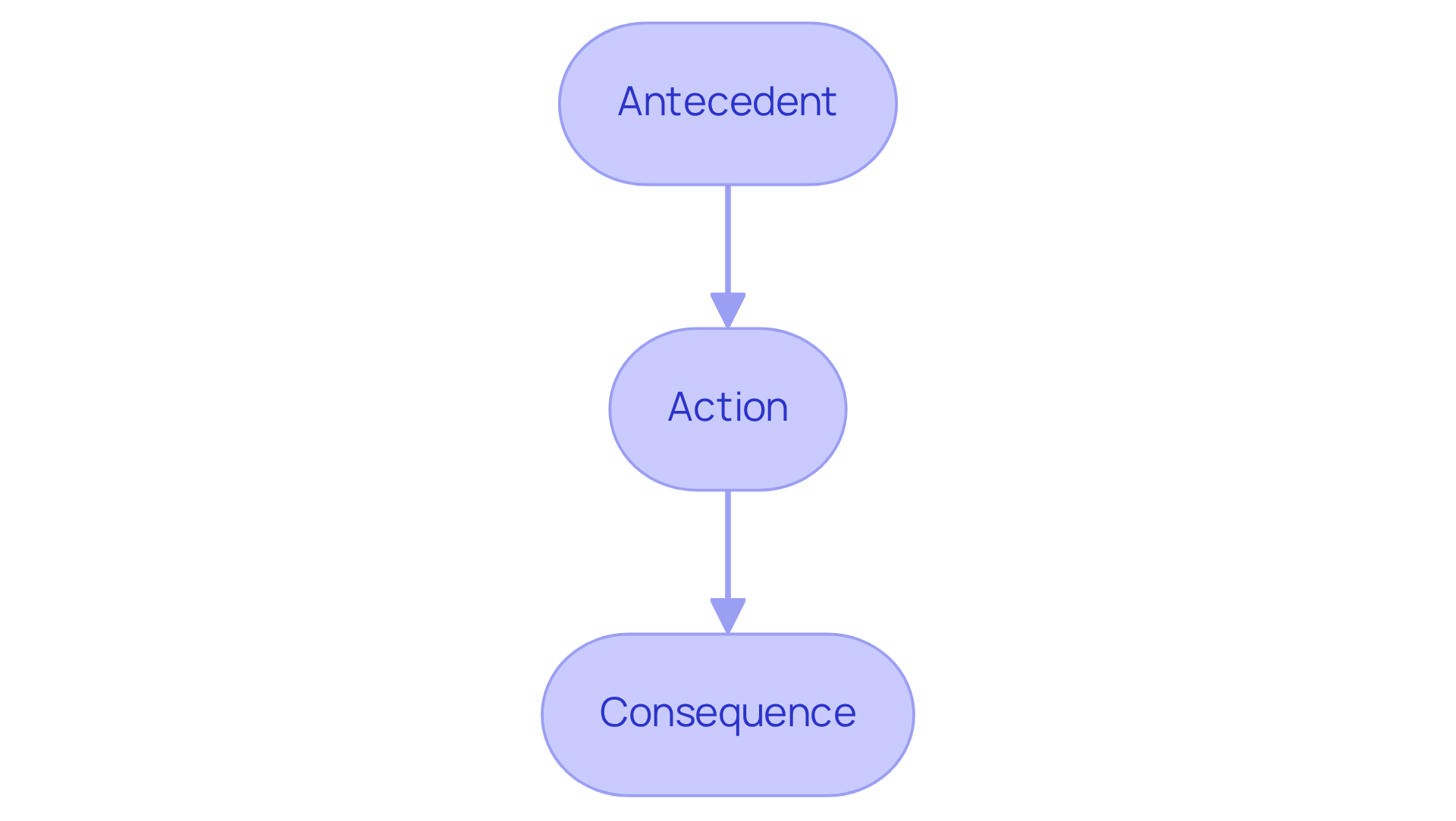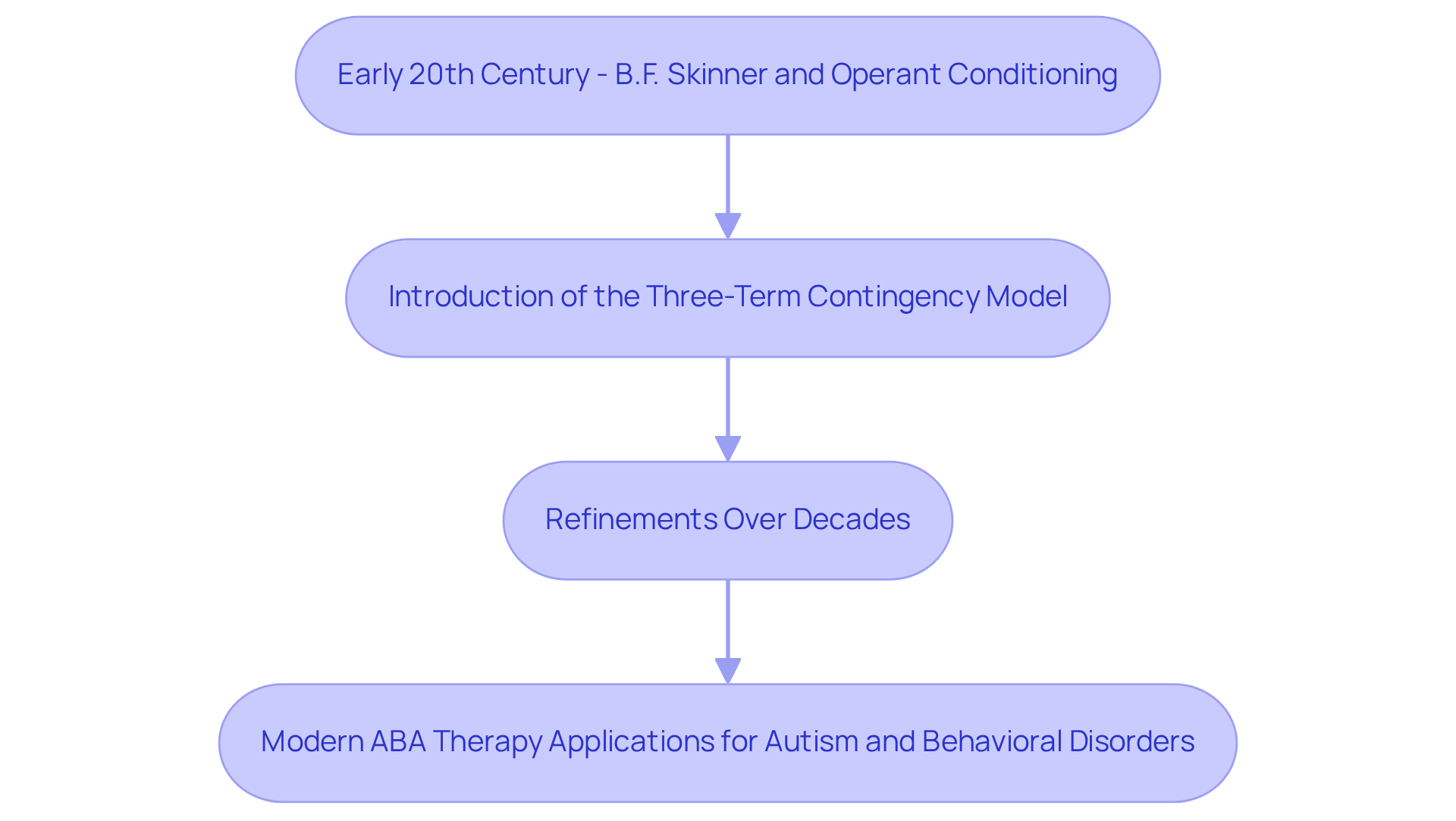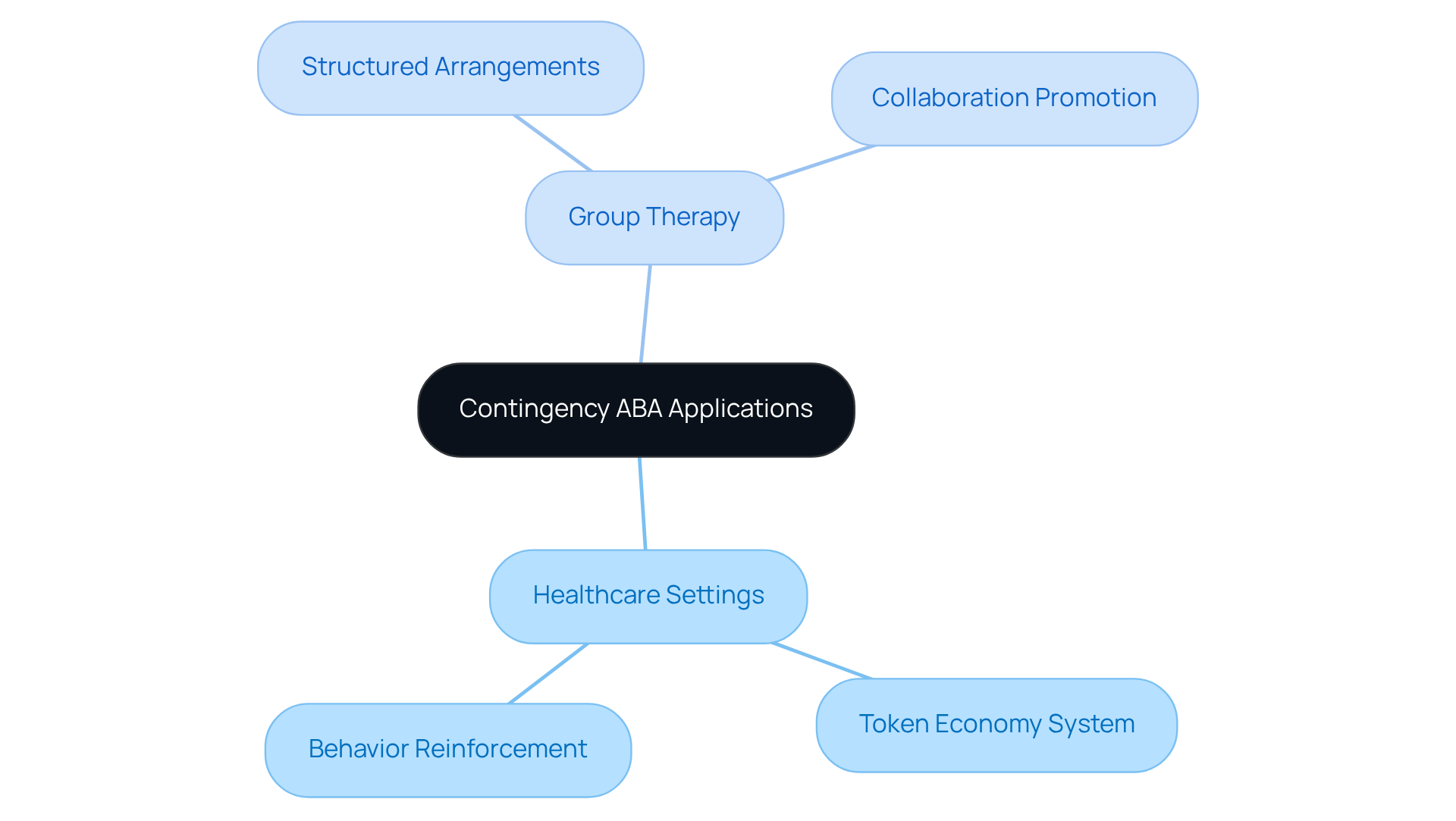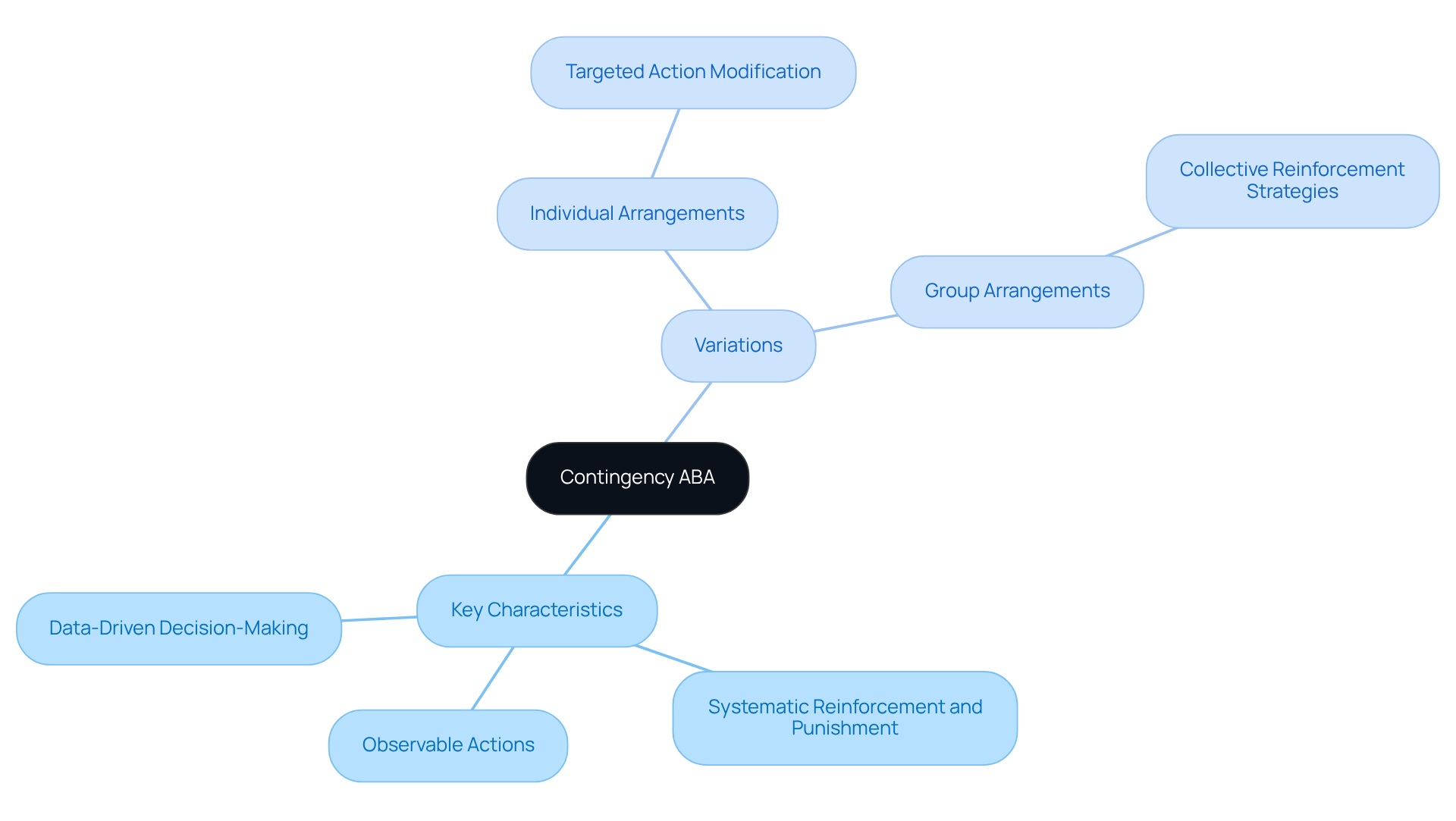September 28, 2025

Contingency ABA represents a pivotal behavioral approach, employing a three-term contingency model—antecedent, action, and consequence—to effectively shape behaviors within healthcare settings, particularly for individuals with autism. This method has demonstrated its effectiveness through practical applications, including:
These strategies not only reinforce positive behaviors but also significantly enhance patient outcomes by systematically modifying environmental influences.
Understanding behavioral principles is essential for healthcare employers aiming to implement effective strategies that enhance patient outcomes. With the increasing demand for Board Certified Behavior Analysts (BCBAs), it is vital to explore how contingency ABA serves as a cornerstone of behavior analysis. This structured approach not only fosters desired behaviors but also tackles complex challenges within therapeutic environments. As healthcare settings progressively adopt these methods, critical questions emerge:
Reflect on your current hiring challenges—how can the expertise of Hire ABA address these issues and elevate your organization's approach to patient care?
The implementation of behavioral principles is fundamentally rooted in contingency ABA, which is encapsulated in a three-term contingency: antecedent, action, and consequence. This model is pivotal for understanding how actions are shaped by environmental influences.
This framework is essential for influencing behaviors through reinforcement or punishment, establishing it as a . By strategically modifying these variables, practitioners can effectively promote desired actions while reducing undesirable ones, thereby enhancing therapeutic outcomes across various settings, including healthcare.

The can be traced back to the early 20th century, marked by the pioneering work of behaviorists such as B.F. Skinner, who introduced the concept of operant conditioning. Skinner's research underscored the significance of consequences in shaping behavior, leading to the formulation of the three-term contingency model. This model has been meticulously refined over the decades, integrating into various therapeutic practices, particularly in the treatment of individuals with autism and other behavioral disorders. The evolution of Conditional ABA reflects a deepening understanding of behavioral principles and their practical application in real-world settings, establishing it as a vital component of modern ABA therapy.

In healthcare settings, contingency ABA is extensively utilized, especially for addressing behavioral issues in children with autism. For instance, therapists often implement a token economy system, allowing children to earn tokens for exhibiting desired behaviors, which can subsequently be exchanged for rewards. This approach not only reinforces positive behaviors but also fosters essential skill development.
Additionally, in group therapy environments, structured arrangements can be created to promote collaboration and reduce disruptive behaviors. The impact of these strategies is profound, leading to enhanced patient outcomes and improved quality of life for individuals undergoing .

Key characteristics of this approach are its focus on observable actions, the systematic application of reinforcement and punishment, and a strong emphasis on data-driven decision-making. Variations of Conditional ABA may include:
Each variation is tailored to meet the unique needs of clients, demonstrating that the method of Contingency ABA is both flexible and effective in behavior modification. Understanding these characteristics empowers practitioners to design interventions that are not only effective but also align with .

The principles of contingency ABA represent a transformative force in healthcare, providing a structured framework for modifying behaviors through the interplay of antecedents, actions, and consequences. Understanding and applying this model enables healthcare employers to harness the power of behavioral science to enhance therapeutic outcomes, particularly for individuals facing behavioral challenges.
Key insights into contingency ABA reveal its historical roots in operant conditioning and its evolution into a vital therapeutic approach. The application of contingency ABA in real-world settings, such as token economies and structured group therapies, highlights its effectiveness in promoting positive behaviors and improving patient quality of life. Furthermore, the flexibility of this method allows for tailored interventions that cater to the unique needs of clients, making it a valuable tool for practitioners.
As the landscape of healthcare continues to evolve, embracing contingency ABA can lead to significant advancements in treatment methodologies. Healthcare employers are encouraged to explore the benefits of this approach, consider the challenges of implementation, and commit to integrating evidence-based practices that enhance patient care. By prioritizing the principles of contingency ABA, the potential for improved behavioral outcomes and overall health is not merely a possibility; it is a promising reality.
What is contingency ABA?
Contingency ABA refers to the application of behavioral principles based on a three-term contingency model: antecedent, action, and consequence. It is fundamental for understanding how behaviors are influenced by environmental factors.
What are the components of the three-term contingency?
The three components of the contingency model are: - Antecedent: The stimulus that triggers an action. - Action: The individual's response to the antecedent. - Consequence: The outcome that follows the action.
How does contingency ABA influence behavior?
Contingency ABA influences behavior by modifying the antecedents and consequences to promote desired actions and reduce undesirable ones, thereby improving therapeutic outcomes.
In what settings can contingency ABA be applied?
Contingency ABA can be applied in various settings, including healthcare, to enhance therapeutic outcomes through the strategic modification of behavioral variables.
Our expert recruitment strategies and AI-driven sourcing ensure that you receive top-notch candidates quickly, without compromising on quality. Whether you’re looking for BCBAs, Clinical Directors, or RBTs, we’ve got you covered.